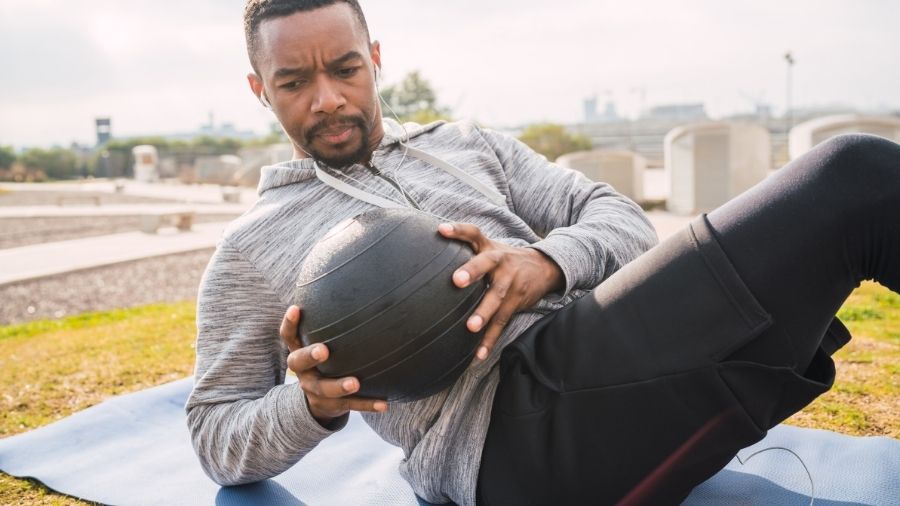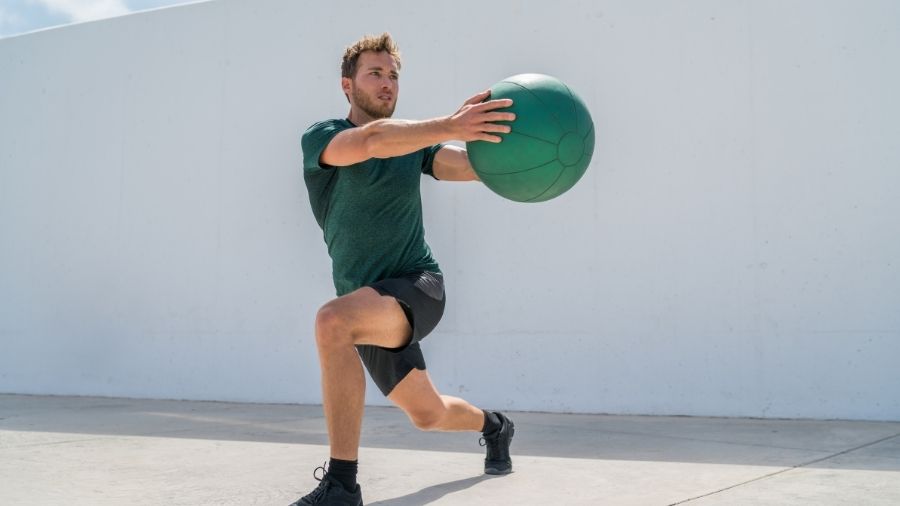Watch any boxing training montage, and you’ll see multiple core exercises being used by boxers—usually a variety of sit-ups, crunches, and unconventional exercises like punching the ab muscles.
The core plays a vital role in boxing as it enhances effective mass and transfers momentum from the legs through to the hands when punching.
Before diving in, it’s essential to define what the core muscles are and their function related to boxing.
What Is The Core?

The core is often seen as the muscles of the trunk. That is the rectus abdominis (your six-pack), transverse abdominus (the deep core muscle), and the obliques (the muscles to the side). However, my definition of the core encompasses everything from the shoulders to the hips.
That is your all-important core musculature. The trunk is never isolated in movement, and therefore, most core exercises you perform for boxing shouldn’t isolate the trunk. The muscles of the trunk have four main functions:
Discover The Little Known Secrets For Unlocking Devastating KO Power!
Heavy hands are built doing these things...
- Flexion
- Anti-Rotation and Rotation
- Anti-Lateral Flexion and Lateral Flexion
- Anti-Extension & Extension
Boxing requires all of these functions to a varying degree, making the typical sit-up and crunches boxing ab routine not great for overall core development. Further, we must dispel the myths surrounding the importance placed on the core musculature.
Firstly, the contribution from the trunk when punching doesn’t differentiate between more experienced and less experienced boxers or between knockout artists and speedsters or players [1].
Suggesting that the contribution of the trunk when punching is not as crucial for punching performance compared to other factors such as the legs. Secondly, boxers with poor posture or back pain are often told they have a “weak core.”
But there is no such thing as a “weak core” when it comes to these issues. Just standing and walking only requires 2% of the rectus abdominis maximum force and 5% of the obliques maximum force [2]. Even when you add 32 kg onto the torso, the combined contraction of the core (abdominals and back) rises from 1% to 3% of their maximum force.
For typical day to day activity, you’re not even producing more than 5% of your maximum force, so your poor posture or back pain is not caused by your core muscles. When boxing, however, your core muscles will need to produce more force because you are performing violent rotations.
They will also need to stiffen quickly to enhance effective mass when hitting your target [3]. This will allow the greatest momentum to be transferred from the feet to the hands.
Is Boxing A Good Core Workout?
Boxing is a good ab workout in that you are constantly flexing, extending, and rotating the spine. You’ll probably find your abdominals are very sore after your first boxing session back in a while. But that doesn’t mean you should rely solely on boxing to develop the strength of your core.
How Do Boxers Train Their Core?

Watch any professional boxer train, and you’ll see different sit-up and crunch variations done for hundreds of reps. This is what would be considered “old school” training. But don’t throw the baby out with the bathwater. You can still do high rep sit-ups and crunches.
They’ve been used for decades and have their value for improving the endurance of the trunk muscles. But as a boxer, you can’t stop there. So, I’m going to detail the eight best core exercises for boxing that aren’t the sit-up or crunch so you can have some variation in your boxing training.
8 Best Core Exercises For Boxing
Hanging Leg Raise
While sit-ups and crunches work the rectus abdominis and the flexion movement of the trunk, there is evidence that suggests you can target the upper and lower regions of the abdominals. That is, sit-ups target the upper abs while leg raises target the lower abs [4].
That is why you need to include the hanging leg raise. Not just for the lower ab development but also to decompress the spine and improve your shoulder health and mobility by prolonged hanging.
Band Rotation
This is the most basic rotational core exercise. All you need is a band attached to something sturdy. You can perform these slowly for a strength emphasis or rapidly for a rotational power emphasis. Depending on your goals, you can use both.
I prefer to have the leg pivot when rotating, incorporating the hips, which are always involved in rotation.
Medicine Ball Rotational Throw
This is a ballistic rotational core exercise that will take your rotational power to the next level. You mustn’t make this all arms and shoulders. The power should come from your trunk and hips.
To make sure it stays that way, the medicine ball shouldn’t be too heavy. 6-8 kgs (12-16 lbs) would be a general suggestion as an upper limit.
Landmine Rotations
Landmine rotations are easily my favorite rotational core exercise for boxing. They can be loaded heavier than any other rotational core exercise and still has a speed component. The eccentric phase will improve your trunk’s elastic or reactive ability so that it can produce force faster.
I prefer these done with the foot pivoting, so it turns the hips with the barbell. This ensures the hips are also involved in the movement and not just the arms and shoulders.
Suitcase Carry
The suitcase carry is an excellent way to develop the strength of the obliques as you move.
Lateral Oblique Hold
Another exercise to hammer your obliques is the lateral oblique hold. This will light up your obliques like nothing you’ve experienced before. If this gets too easy, you can hold a plate. Shoot for 20-30 seconds per side.
Barbell Rollouts
Barbell rollouts are essentially ab wheel rollouts but with the barbell. You can use either, but the barbell load places a more significant eccentric load as you try to slow the barbell down at the bottom of the movement.
This is targeting anti-extension, which is an eccentric exercise for the flexion function of the core.
Back Raise w/ Twist
Instead of performing a traditional back extension, you can perform them with a twist, making them slightly more specific for the sport of boxing.
Boxing Core Workout
Here are some boxing ab workouts that you can add to your current boxing strength training regimen.
Boxing Core Workout Add-On 1
A1) Hanging Leg Raise 3 x 10
B1) Heavy Landmine Rotation 3 x 5/side
C1) Back Raise w/ Twist 3 x 20
Boxing Core Workout Add-On 1
A1) Lateral Oblique Hold 3 x 20 sec
B1) Rotational Medicine Ball Throw 3 x 5/side
C1) Barbell Rollouts 3 x 10
References
1. Filimonov VI, K.K., Husyanov ZM, & Nazarov SS., Means of increasing strength of the punch. NSCA Journal, 1985. 7: p. 65-66.
2. Lederman, E. (2010). The myth of core stability. Journal of bodywork and movement therapies, 14(1), 84-98.
3. Lenetsky, S., Nates, R, Brughelli, M, Harris, N., Is effective mass in combat sports punching above its weight? Human Movement Science, 2015. 40: p. 89-97.
4. Willett, G. M., Hyde, J. E., Uhrlaub, M. B., Wendel, C. L., & Karst, G. M. (2001). Relative activity of abdominal muscles during commonly prescribed strengthening exercises. Journal of Strength and Conditioning Research, 15(4), 480-485.


